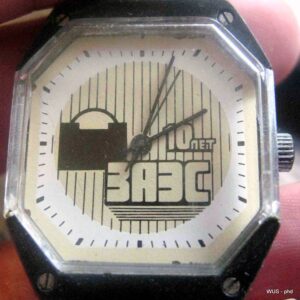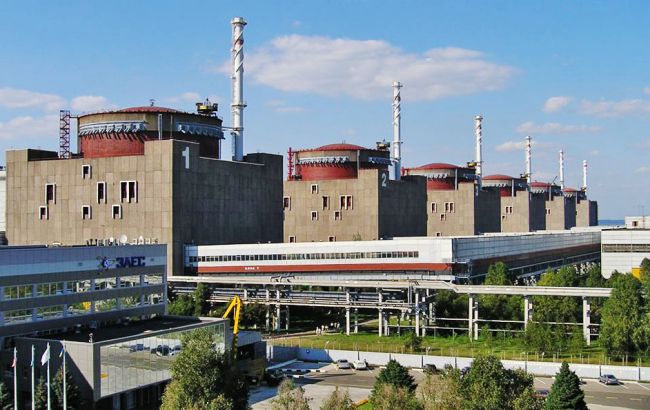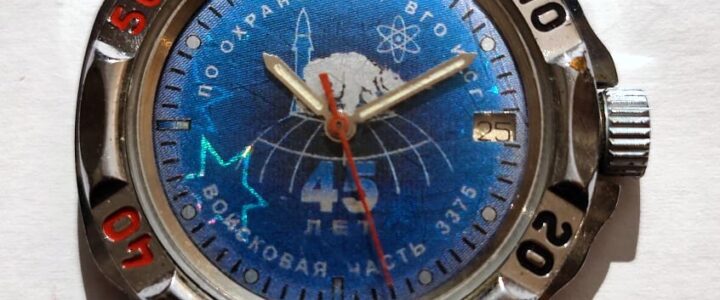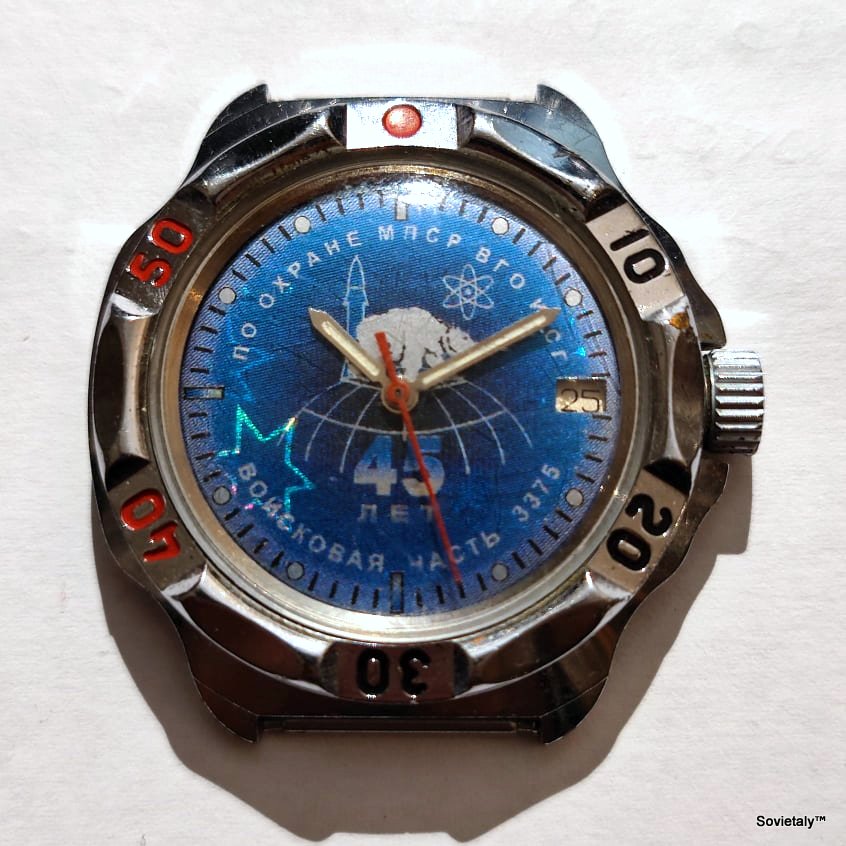Introduction
The Raketa Sosnovy Bor watch is a unique and fascinating piece that celebrates the twenty-year anniversary of the Sosnovy Bor nuclear power plant. This watch, produced in 1993, incorporates cultural and local symbols, making it an item of not only historical value but also great aesthetic and cultural significance. The three concentric stripes on the edges of the dial, representing the colours of the Russian flag (white, blue, and red), clearly indicate that this watch was created in the post-Soviet period, reflecting the new national identity of Russia.
Description of the Dial
The dial of the Raketa Sosnovy Bor watch is rich in symbols that tell the story of the nuclear power plant and the city of Sosnovy Bor.
- Yellow Part: This represents a characteristic structure of Andersengrad, a theme park located in the city of Sosnovy Bor. Andersengrad is inspired by the fairy tales of Hans Christian Andersen and features a castle with a clock, a copper roof made of red bricks, and a weather vane. The roof decoration, with the stylised sun and the stripes radiating to the right, is clearly visible on the watch dial.
- Blue Industrial Building: This represents the nuclear power plant itself, a symbol of progress and technology.
- Green Elements: These represent trees, highlighting the connection with nature and ecology. The city of Sosnovy Bor is indeed rich in forests, covering an area of about 7.3 km². These green elements indicate a balance between energy production and environmental preservation.
This watch is highly sought after by collectors for its unique design and the historical and cultural significance it carries.

The Sosnovy Bor Nuclear Power Plant
History and Construction
The Sosnovy Bor nuclear power plant, also known as the Leningrad Nuclear Power Plant (LNPP), is located in the Leningrad region, Russia. The city of Sosnovy Bor was founded in 1958 specifically to support the construction and operation of the nuclear power plant. The construction of the plant began in 1967, and the first unit was launched in 1973. This plant was one of the first in Russia to use RBMK-1000 reactors, the same type used at the Chernobyl plant.
Events and Incidents
- 1973: The first unit of the Sosnovy Bor nuclear power plant begins producing energy.
- 1975, 1979, 1981: Three more units come online, making LNPP one of the largest nuclear power plants in the world.
- 1990: During refurbishment works of Unit 1, an increase in radiation is detected due to the leakage of contaminated graphite.
- 1991: An accident due to faulty equipment and non-compliance with safety rules causes ten fuel rods to break.
- 1992: Another incident results in the release of radioactive gases and iodine into the air.
- 2009: A unit is stopped due to a hole in a pump discharge header.
- 2015: The first unit of the plant is shut down for decommissioning.
Modernisation and Replacement
Over the years, the plant has undergone numerous modernisation works to improve safety and efficiency. In 2008, construction of the Leningrad Nuclear Power Plant-2 (LNPP-2) began, using new-generation VVER-1200 reactors. These reactors are designed to replace the old RBMK-1000 units, with greater efficiency and higher safety standards.

Andersengrad: A Fairy Tale Piece of Local Culture
Andersengrad is a theme park located in Sosnovy Bor, inspired by the fairy tales of Hans Christian Andersen. It is a magical place for children, characterised by fairy-tale architectural structures, including castles and towers. The castle with the clock and the copper roof is one of the main attractions of the park, decorated with stylised elements such as weather vanes. This detail has been integrated into the design of the Raketa Sosnovy Bor watch dial, emphasising the connection between local culture and the industrial history of the city.
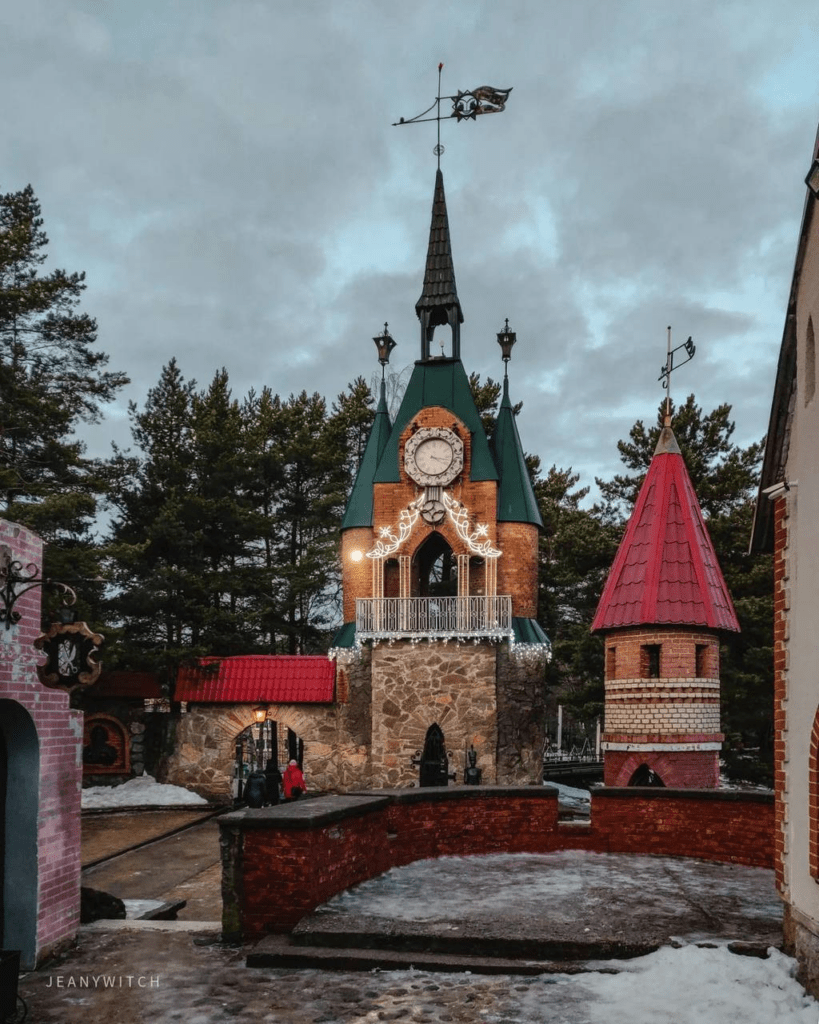
Conclusion
The Raketa Sosnovy Bor watch is much more than just a timepiece. It is a piece of history that celebrates the Sosnovy Bor nuclear power plant and integrates local cultural symbols such as Andersengrad. This watch represents a perfect balance between technological progress and respect for culture and the environment, making it a valuable item for collectors and history enthusiasts. Its production in 1993 and the use of the Russian flag colours place it in a period of national renewal, reflecting the new identity of post-Soviet Russia.




